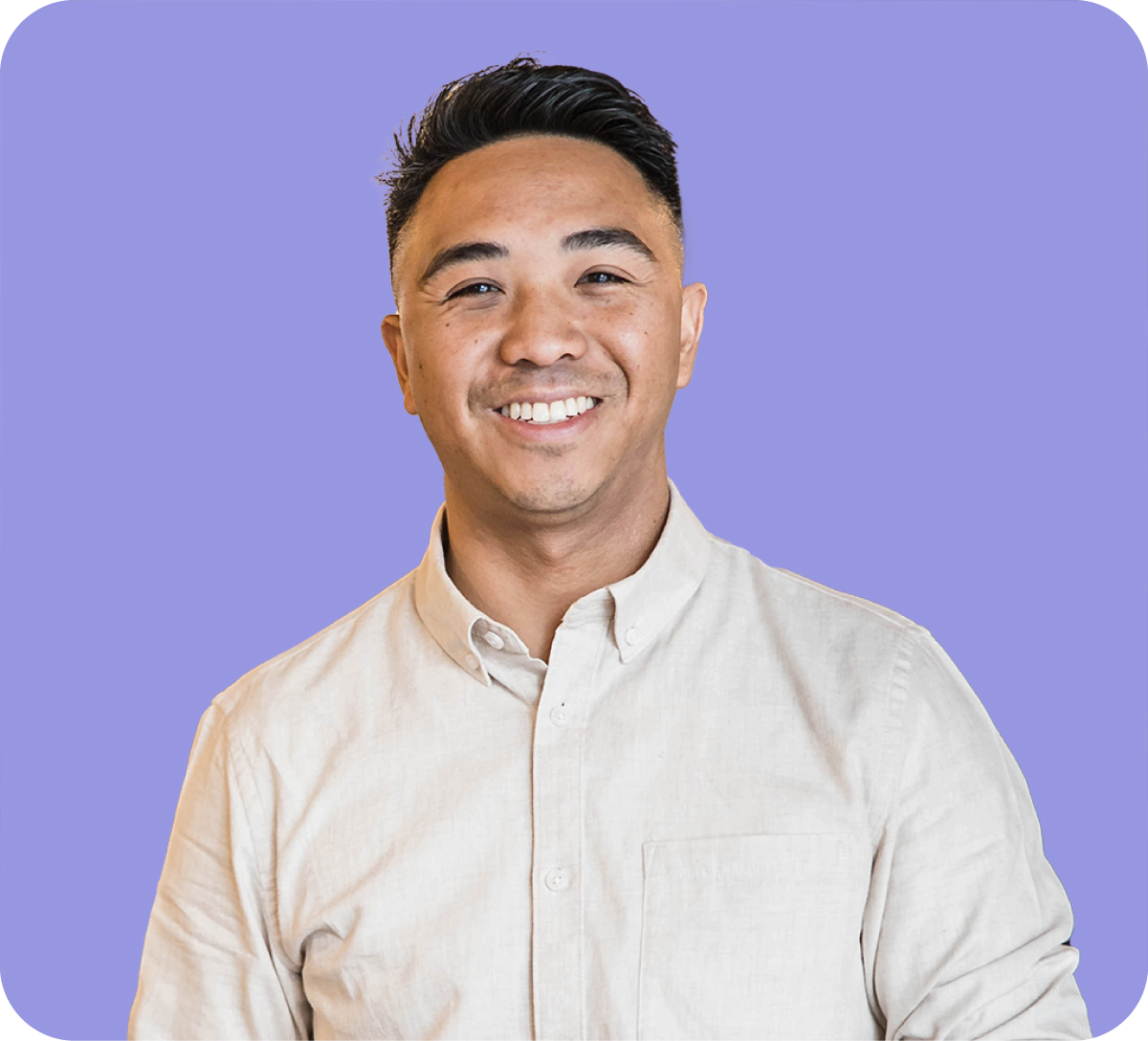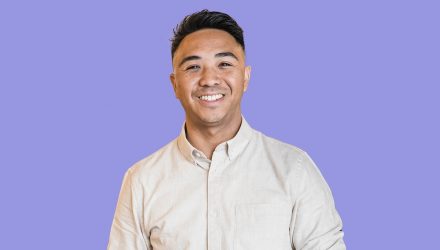There’s a massive transition of wealth already underway in the U.S. as older generations retire and new generations set the investing course. Cerulli Associates estimates that 40% of financial industry assets, worth about $10.4 trillion, will roll over in the next decade. That’s 37% of advisors retiring.
This series takes a look at how that transition is already playing out as younger, more diverse advisors take the helm. It also looks at how younger clients with different values steer the direction of capital in the U.S., whether inheriting generational wealth or building it for the first time.
This month I talked with Jonathan Wong, CFP, APMA, CRPC, founder and principal financial planner at Layari Financial, about authenticity, serving underserved communities, and value differences in how younger generations invest.

Jonathan Wong, CFP, APMA, CRPC, founder of Layari Financial
Karrie Gordon, staff writer, VettaFi: Jon, thank you so much for sitting down with me today and agreeing to be a part of this series. Let’s start things off with your journey and how you got to where you are today as the founder of Layari Financial and your focus on underserved communities.
Jonathan Wong, CFP, APMA, CRPC, founder of Layari Financial: I started my journey in the financial industry in 2008. It’s been almost 15 years, and I’ve worked my way from the bottom all the way up.
I joined VantaQuest, a wealth management firm in Seal Beach, California, and worked there part time as a junior in college. After I graduated, they offered me a full-time position. I started out as a client service associate, then was promoted to an investment research analyst. The company sponsored my education for the CFP program at UCLA to learn more about comprehensive financial planning.
After four years at VantaQuest, I transitioned to Ameriprise Financial as a paraplanner and later as an associate financial planner. During my nine years at Ameriprise, I worked at three different franchise branches, each of them serving a different market. The most recent branch specialized in working with dentists, doctors, and lawyers — more high net worth clients, business owners, with account minimums of $1 million.
At that point, I felt like I was only working to grow the wealth of those who were already wealthy.
I started this career to help my generation, my family and friends, and the underserved communities that don’t know where to turn for professional advice. At that moment, I knew I had to start my own firm to uplift my community.
Removing Stigmas Around Money and Diverse Clients
Gordon: What a fantastic leap to make for yourself. Tell me about Layari Financial.
Wong: Layari Financial is named after my two daughters, Layla and Aria. They are my motivating forces to persevere and do the right thing. I really want to bring conversations about money to the forefront and remove the stigmas around it. Financial planning should not be reserved for the wealthy; it should be available for everyone.
At Layari, we focus on value-based financial planning. We do a deep dive to explore what is truly important and what motivates them. We discuss their goals and what they value. That’s really where it starts. When making financial decisions, there are two questions I ask my clients: 1) Does it align with your values? 2) Can you afford it?
An important part of my role as a financial professional is to encourage and promote financial literacy. I feel it’s my duty to remove financial jargon and break it down to simple terms so that people can understand and make the best decisions for themselves.
Gordon: Talk to me about your clients. Are they mostly families and individuals that are mid-career? First time wealth builders?
Wong: My client base is really diverse. I work with LBGTQ+, BIPOC, single individuals, families, corporations, small business owners, music artists, creatives, healthcare professionals, and HENRYS (high earners not yet rich).
They’re mid-30s generally and mid- to senior-level in their careers. A very common theme is that they are motivated to make changes to their situation to get to the next level, whatever that may be for themselves.
I want to serve the people who don’t have $1 million yet, but are striving to get there.
Serving Underserved Communities
Gordon: I know you target the AAPI community in particular. Can you tell me more about that demographic and the challenges you see for these communities?
Wong: I’m a member of the AAPI (Asian American Pacific Islander) community. My parents immigrated to the U.S. from the Philippines when they were teenagers to create a better life for themselves and their families.
I feel that immigrants have a common theme when they think about money. Their priority was just to survive, because most of them came to this country with nothing. They weren’t able to think about long-term goals. As a first generation Filipino-American, I feel that it is my responsibility to not only help these communities survive, but thrive by making professional financial advice more accessible.
I looked at the stats on the CFP board website, which was updated September 1. Seventy percent of all CFPs are male, and 82% are white. Just 4% are Asian and 2% are Black. I feel like the CFP board tries to be diverse but it’s been very slow to change.
That’s why I started my firm. I want people to know there’s a real professional in their corner that looks like them.
Changing Generational Values and the Role of Tech
Gordon: Let’s step back and talk trends now. What kinds of investment priorities are you seeing in this younger generation of clients? Are there value differences that you see in how they approach investing?
Wong: Yes. I feel like working with our generation (millennials) is different. It’s absolutely different than working with the baby boomer generation, because one, we have technology. If an advisor doesn’t have the tech available, clients are just going to go somewhere else. But also, people really love the personal connection. If a younger client is just treated like a number, they’re gone. Once they do find that good fit though, they’re loyal. I absolutely see that.
There has also been a shift in tech in the financial space. Technology has made it very easy for anyone to invest, such as Robinhood, which could be a good and bad thing as we all know. Communities are also betting against Wall Street and taking matters into their own hands, such as the meme stocks like AMC or GameStop. AI is also coming to the forefront with roboadvisors. That’s a newer development, but I still strongly feel that a personal financial planner will never be replaced by a robot because of all the intricacies and complexities of being a human.
When it comes to investing, I think the traditional stock and bonds and ETFs are a little more old-school for younger generations. Most of my clients are looking towards tangible assets like real estate that offer passive investment — things like Airbnb or long-term rentals, or investment properties. They really want to supplement their lifestyle, but passively. It’s interesting, they’re not necessarily looking for longer-term gains, more what they can do to fulfill their current lifestyle.
That’s a big difference for our generation. We’re more short term, living in the now, immediate gratification thinking. We’re not really planning for retirement, we want to improve our lifestyle. How do we travel more? How do we get more out of life?
The Advisor Industry Isn’t “Planning to Pass the Torch” for Now
Gordon: The role of AI disruption is something most industries are having to grapple with right now. Outside of the evolution of tech, what differences are you seeing, if any, in the advisor industry?
Wong: As you mentioned, 37% of the advisors may be retiring in the next decade. From my experience though, they’re not retiring — they really want to stay in the business. A lot of people are working past their retirement age. For example, required minimum distributions (RMD) have changed from age 70.5 to 72 to 75.
Senior advisors either don’t have a succession plan in place or are scrambling to put one together. They’re not really planning to pass down the torch to the younger generation. Their clients are also getting older, and these firms are hiring younger advisors to help with the clients’ kids. The natural progression is if an advisor gets too busy, they have to hand it over to the junior advisor, and then they take over that relationship.
It’s interesting to think that when the baby boomers pass away, all that wealth will be transferred to our generation. Because there’s no education behind it, I feel like more than 50% of those clients are going to leave unless there’s an established relationship there.
How to Reach More Communities Authentically
Gordon: Jon, this has been really fantastic. I have one last question for you before you go. What advice do you have for advisors who are looking for and starting to think about trying to expand the reach of their practice to be more inclusive of broader demographics and communities?
Wong: I think the main part if they truly want to have a diverse client base, spread their reach, and help more people that are outside of the majority is to do their research. Find out what the struggles and pain points are for that demographic, and then tailor your advice and marketing strategies to that demographic.
This is the same for targeting younger generations too. Blanket recommendations don’t work. Younger clients want you to have the right language to really make that connection. Authenticity is very important.
The silver tsunami is going to come. There are not enough advisors preparing to serve the market that I am serving. I wish more people would enter the financial industry to learn all the benefits of it. I feel like this is one of the best industries because there’s no income cap. It’s sky high, and you’re doing so much good for people. Every day, I truly feel blessed because I’m helping another family or another person by avoiding mistakes and making better financial decisions.
For more news, information, and strategy, visit the Responsible Investing Channel.

